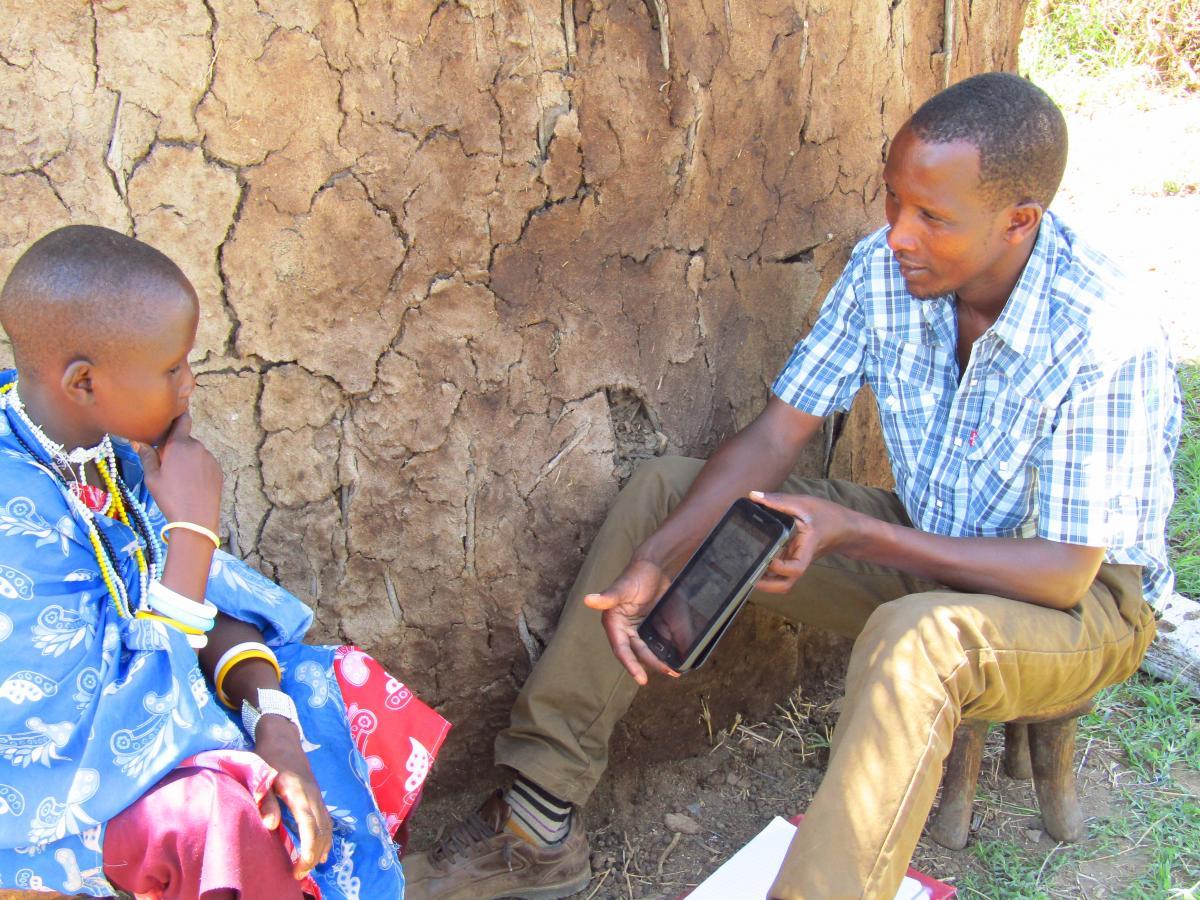Opzoeken
2460 - 2475 van 2520 nieuws bekijken
-
BTC joins forces with VDAB and SYNTRA in Palestinian Territory
Eva MORRE | 26/04/2016
Since 2014, Belgium has the lead in the education sector in the Palestinian Territory. Together with the Ministry of Labour and the Ministry of Education and Higher Education, the Belgian Development Agency (BTC) aims to enhance the quality and the capacities of training institutions. One of the objectives is to improve the quality and the labour-market relevance of technical and vocational education and training through the creation of public-private partnerships. To further strengthen our expertise, BTC joins forces with the Flemish Public Employment Service (VDAB) and the Flemish Network for Entrepreneurship Training (SYNTRA). On April 22th, three experts of VDAB and SYNTRA met in Jerusalem with the Consul General of Belgium, Bruno Jans, and the Head of Development Cooperation, Florence Duvieusart, to discuss how the Palestinian partners can benefit from their expertise. Both organisations participated last week in a practical training workshop organised by BTC in cooperation with the International Training Centre of the ILO on the management of technical and vocational training institutions. In the coming months VDAB and SYNTRA will work closely together with their Palestinian counterparts of the public and private sector to further strengthen the TVET sector.
-

El Ministerio de Medio Ambiente y Agua capacita a técnicos del PARC y municipales en gestión administrativa
Wietse FRICKEL | 21/04/2016
El Ministerio de Medio Ambiente y Agua, a través del Programa de Apoyo al Riego Comunitario (PARC), co-financiado por el Reino de Bélgica y el Estado Plurinacional de Bolivia, capacitó a 18 técnicos del programa PARC y de los Gobiernos Autónomos Municipales (GAMs) de Pasorapa, Omereque, Aiquile, Tarabuco, Presto y Yamparáez, en el área de “Operación del Sistema de Seguimiento del PARC y procesos administrativos y legales de contratación”. El objetivo del taller desarrollado en el municipio de Aiquile, entre el 13 y 15 de abril, fue el de capacitar a los funcionarios en el uso del Sistema de Seguimiento del PARC y en los procesos administrativos, técnicos y legales de contratación de bienes y servicios, en el marco de la norma vigente en la materia. Asimismo, este taller tendrá como efecto mejorar el desempeño del trabajo de los supervisores y los profesionales en el monitoreo y seguimiento de las obras de infraestructura de riego para que desarrollen el Acompañamiento y Asistencia Técnica a los proyectos y hacer que los procesos de contratación, tanto administrativos como legales sean más eficientes y oportunos.
-
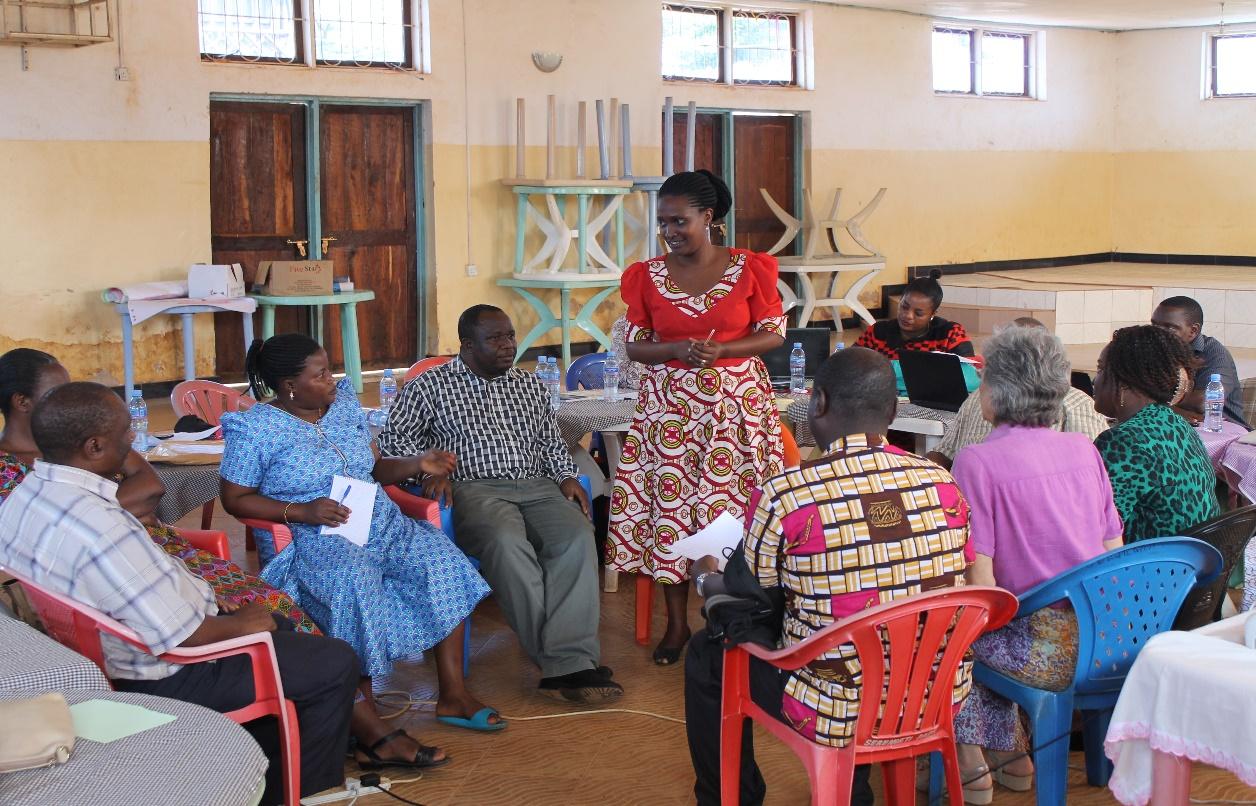
Gender and advocacy training for Project and Local Government staff
Jennifer SWERTVAEGHER | 19/04/2016
From 6 to 8 April a Gender and Advocacy Training was organised by NRM-LED at Kasulu District. All main project implementers – being NRM-LED staff and selected staff of the LGAs (Local Government Authorities) the project works with – joined the training. Through interactive sessions, group works and role plays, the participants were made aware of gender issues in general, and gender issues in natural resources management in Tanzania in particular. In the design of the NRM-LED project, gender specific indicators were included, such as participation of women in decision making, and access to and control over natural resources by women. But putting these things in practice requires the appropriate knowledge and skills. Thus, the aim of the workshop was for project implementers to acquire capacities on gender, so they can identify gender challenges in their day to day activities, and explore ways to deal with these challenges. This gender training was the first training of its kind to be conducted by the project, and therefore played an important role in creating awareness among the Project and Local Government staff. After the training some of the participants declared that they can now see and plan things with 'gender lenses'. It was the first gender training, but it will not be the last, because – as we all know – working on equal chances for women and men is not a one day effort!
-
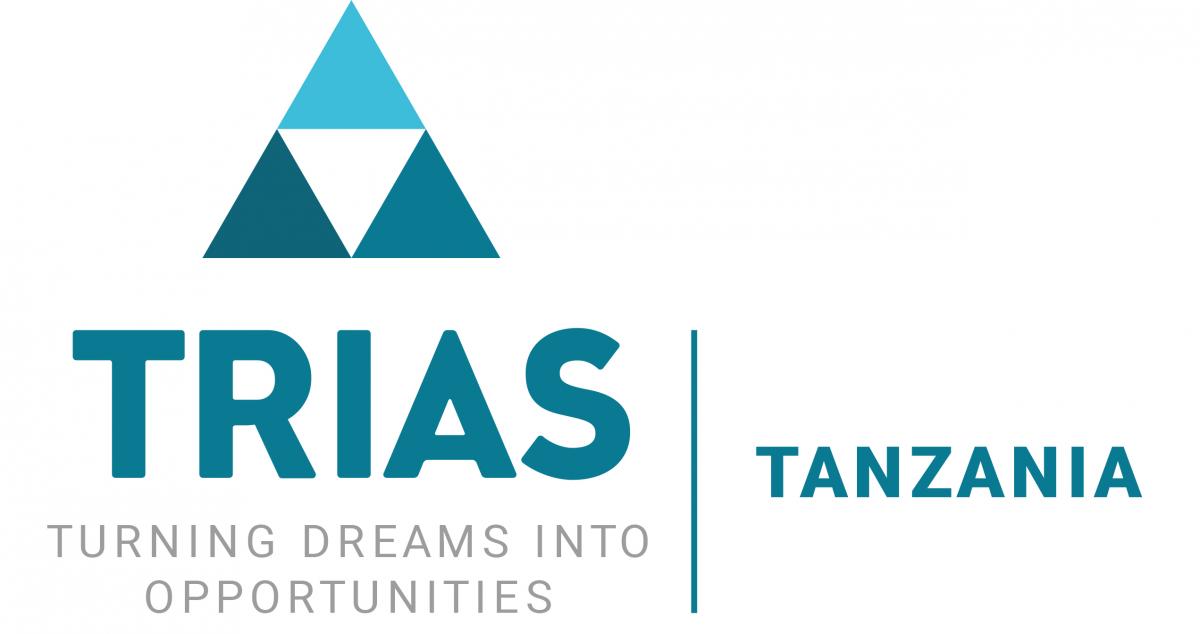
Maisha Bora International Partners: TRIAS
Toon DRIESEN | 15/04/2016
What we doThe mission of Trias consists of elevating the socio-economic security and the well-being of family farmers and small entrepreneurs by supporting their member organisations. Furthermore, Trias wants to stimulate a global exchange and a cooperation between farmers and entrepreneurs. Trias supports more than one million family farmers and small entrepreneurs in fourteen countries, spread across Asia, Africa and Latin America by reinforcing dozens of upcoming producer organisations and organisations supporting micro-entrepreneurs.Role in the Maisha Bora Programme In the Maisha Bora programme, Trias is responsible for the business component. The idea is to diversify household’s incomes so that they become more robust and have more funds available for nutrition, health and education. As the two districts have very few opportunities in agriculture, businesses offer an important opportunity to diversify the income of a household. Trias does this by a bottom-up and a top-down approach. With its bottom up approach Trias aims at the creation of around 250 VICOBAs (village community banks) and at supporting income generating groups active in poultry, livestock, honey, leather and food related businesses. We do this by strengthening the capacities of member based organisations MWEDO (Maasai Women Development Organisation), PWC (Pastoralist Women Council), LCDO (Longido Development Organisation) and MVIWATA Arusha, a farmer network active in Arusha region).Top-down we work together with the Manyara and Arusha chambers of commerce in the two districts to improve the business environment. We do this by strengthening the capacities of the district trade officers and by organizing so called round tables between the business community and the district officials. The end product will be a clear vision on potential sectors in the district and the establishment of an investment fund to support businesses in the two districts.For more information, please visit our website on: http://trias.ngo/en/
-
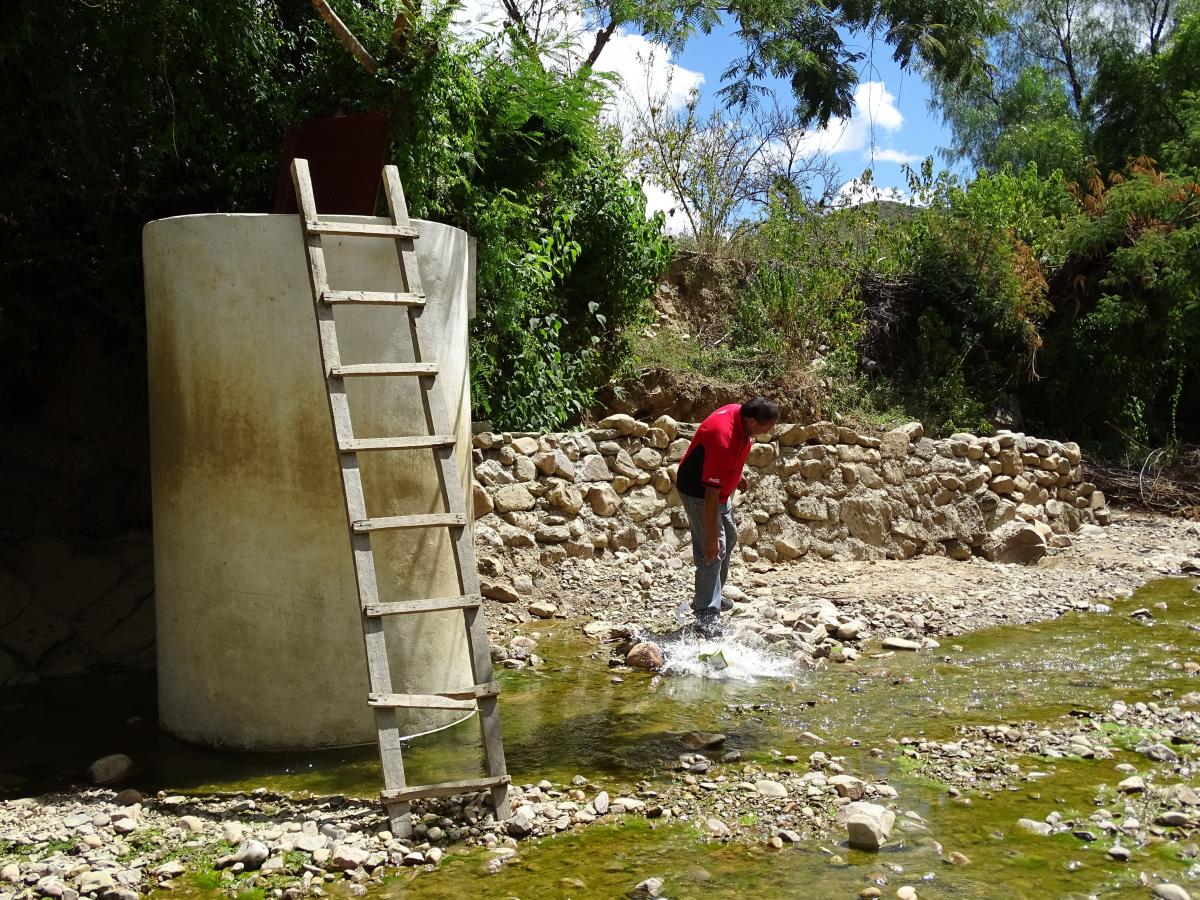
El Programa de Apoyo al Riego Comunitario construye un sistema de microriego para 47 familias en Presto
Wietse FRICKEL | 12/04/2016
El Ministerio de Medio Ambiente y Agua, a través del Programa de Apoyo al Riego Comunitario (PARC) y la Cooperación Técnica Belga entregó un sistema de microriego en la comunidad de San José de Toca, municipio de Presto del departamento de Chuquisaca. En la comunidad de San José de Toca, el Gobierno Autónomo Municipal de Presto y el PARC con donación del Reino de Bélgica, invirtieron más de Bs 1,1 millones de bolivianos con el objetivo de garantizar la oferta de agua de riego para 24 hectáreas de riego incremental, beneficiando a 47 familias. El sistema de microriego consiste en la construcción de una galería filtrante, gaviones, una pasarela de 20 metros y tubos de conducción por más de 4.600 metros de longitud, con sus respectivas cámaras de distribución, que aseguraran la oferta de agua para que los usuarios puedan regar sus cultivos en los meses de mayor demanda de agua, incrementando la productividad agrícola, que mejorará sus ingresos económicos y garantizará la seguridad alimentaria de 47 familias en la comunidad de San José de Toca. Asimismo, el costo del sistema incluye la contratación de un profesional que capacitará a los regantes con servicio de Asistencia Técnica (durante un año a partir de la entrega de la obra), en el mantenimiento y operación del sistema de riego, el manejo del agua de riego en las parcelas, el control integrado de plagas y enfermedades, entre otros puntos. En la entrega de la obra participaron técnicos del Gobierno Autónomo del Municipio de Presto, del Ministerio de Medio Ambiente y Agua, representantes del comité de riego de la comunidad y representantes de la empresa constructora. “La buena función del sistema de riego depende del esfuerzo de ustedes, hermanos regantes. Es necesario desarrollar un manual de operación, limpiar los tubos y canales, tomar su responsabilidad en el uso del sistema,” señaló uno de los representantes del Ministerio de Medio Ambiente y Agua. Además expresó la necesidad de aprovechar y exigir el apoyo del técnico de Asistencia Técnica para el manejo, el funcionamiento y la operación del sistema de riego. Por su parte, el Gobierno Autónomo del Municipio de Presto, agradeció al MMAyA y a la Cooperación Técnica Belga por haber pensado en el municipio de Presto para desarrollar obras de riego que mejoraran la producción agrícola en la zona. PARC. 4 de abril de 2016.
-
Programme brief: Baseline study marks start of digital journey
Toon DRIESEN | 07/04/2016
The Belgian Development Agency, BTC, and its partners turned the baseline study of the Maisha Bora programme in Tanzania into an inspiring learning process for all actors involved. Five international and ten local partners successfully worked together to carry out a common household survey. Coached by data experts and equipped with tablets and GPS-devices, local programme partners took charge of the data collection. In this way the baseline study became a leverage for digitizing development cooperation, building capacity and promoting programme ownership. The baseline study of the Maisha Bora programme was conducted in December 2015 and comprised an extensive household survey. By understanding the starting point of the programme, the different partners will be able to monitor and evaluate how Maisha Bora contributes to improving food security during the coming years. To conduct the baseline study, BTC teamed up with a service provider, Savannas Forever Tanzania (SFTZ), to design a digital household survey incorporating impact indicators for all different programme components. The survey consisted of a questionnaire and anthropometric measurements to gather both quantitative and qualitative information on the food security and nutrition status of the beneficiaries at the start of the programme. The questionnaires were entered into a software programme and enumerators were sent out to the field with GPS devices and pre-programmed tablets. For Jovit Felix, programmer of SFTZ, digitising the questionnaires was an obvious choice: “Digital questionnaires make data collection much more efficient and enumerators can minimise the time they spend on each interview. We are much more in control of data quality during data collection and we avoid encoding errors.” Coached by data experts and equipped with pre-programmed tablets and GPS devices, local programme partners took charge of the data collection. After a four-day training on interviewing skills, anthropometric measurement techniques and how to work with the tablets and the survey software, the local partners traveled to the villages to carry out the household surveys. All these efforts lead to a more efficient data collection. All questions were linked together in such a way that irrelevant questions were skipped automatically. After the interview, the enumerators could directly upload all the completed surveys to a server, so the data experts of SFTZ could start with data cleaning and analysis. By linking the household surveys to GPS coordinates, a data layer was added to easily map out geographical differences. This way, digital data allow for more precise analyses on different parameters, both time-bound and geographical. This should lead to better decisions during programme implementation and, ultimately, to better results.Read the full article on our baseline on: goo.gl/DXWzRm
-
Buceo arqueológico a 3810 metros sobre el nivel del mar
Agar TAMAYO | 31/03/2016
En el marco de las actividades del “Proyecto de Identificación, Registro y Valorización del Patrimonio Cultural en la Cuenca del Lago Titicaca”, en fecha 22 de marzo de 2016 el equipo del Proyecto visitó el Municipio de Tiquina en el Departamento de La Paz, se entrevistó con las autoridades municipales y visitó las instalaciones del Centro de Instrucción de Buceo de Altura (CIBA), ubicado a 3810 metros sobre el nivel del mar. Esta actividad se enmarca en el resultado 1 del Proyecto que busca “Diseñar y poner en marcha un programa de formación de buzos especializados en arqueología subacuática a través de una sinergia entre el CIBA y la Universidad Libre de Bruselas (ULB)”. Este resultado involucra a autoridades militares de la armada naval boliviana quienes en la entrevista mostraron mucho interés en coadyuvar en la formación de arqueólogos bolivianos inicialmente en buceo deportivo; para después recibir de parte de la ULB una capacitación específica en buceo arqueológico. El Proyecto será ejecutado por el Ministerio de Culturas y Turismo del Estado Plurinacional de Bolivia y la CTB, Agencia Belga de Desarrollo, en 13 Gobiernos Autónomos Municipales del Departamento de La Paz ubicados en los municipios de: 1) Copacabana, 2) Escoma, 3) Guaqui, 4) Pucarani, 5) Santiago de Huata, 6) San Pedro de Tiquina, 7) Ancoraimes, 8) Batallas, 9) Puerto Carabuco, 10) Puerto Acosta, 11) Tito Yupanqui, 12) Tiahuanacu y 13) Puerto Pérez.La Paz, Marzo 2016
-
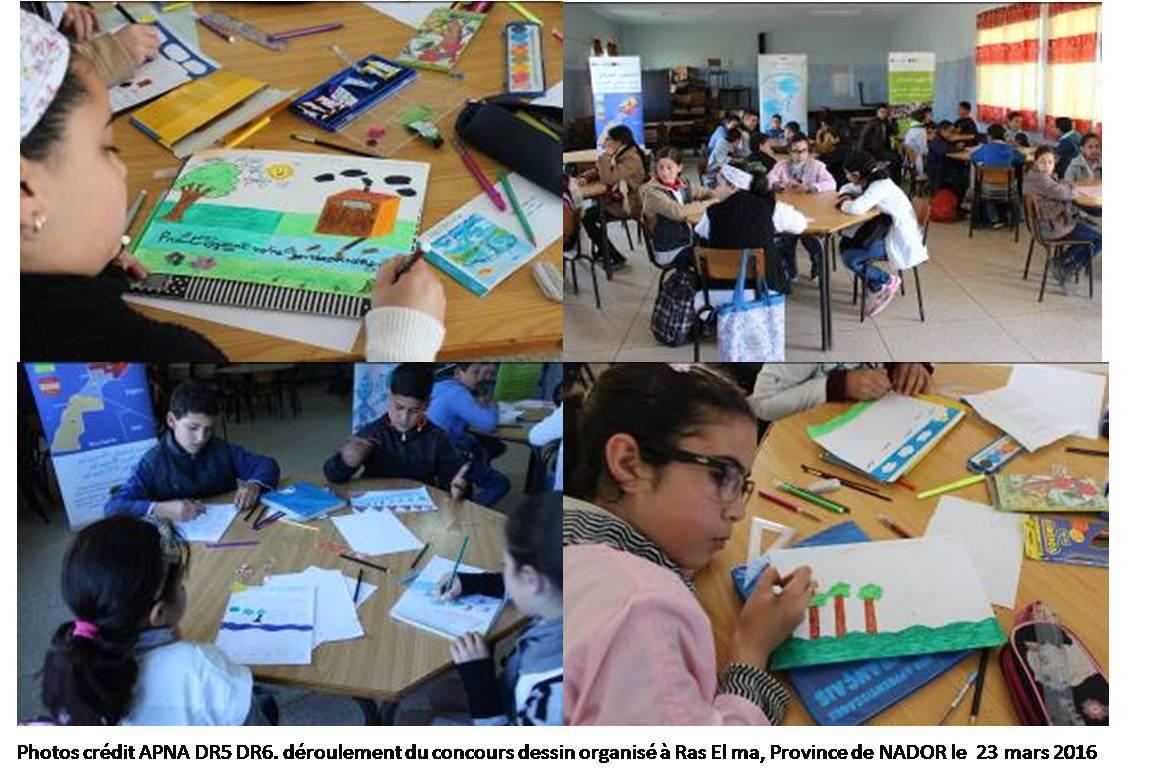
La journée mondiale de l’eau vue par les enfants
Meriem HILALI | 30/03/2016
Le 23 mars 2016 à Ras El Ma, le projet d’Appui au Programme National d’Assainissement Liquide a organisé un concours de dessin sur la thématique de l’environnement pour les élèves des éco-écoles de la ville.
-
Managers de demain
Meriem HILALI | 25/03/2016
Du 16 au 18 mars 2016, dans la province d’Oujda, le "Projet de Développement de la Filière l’Amandier dans la Région de l’Oriental" a organisé des formations au profit des producteurs d’amandes sur la création, la gestion administrative, technique et commerciale des organisations professionnelles (Coopératives et Groupements d’Intérêt Économique). Mieux formés, ils pourront revendiquer leur place comme acteurs responsables à part entière et gérer leurs organisations en managers.
-
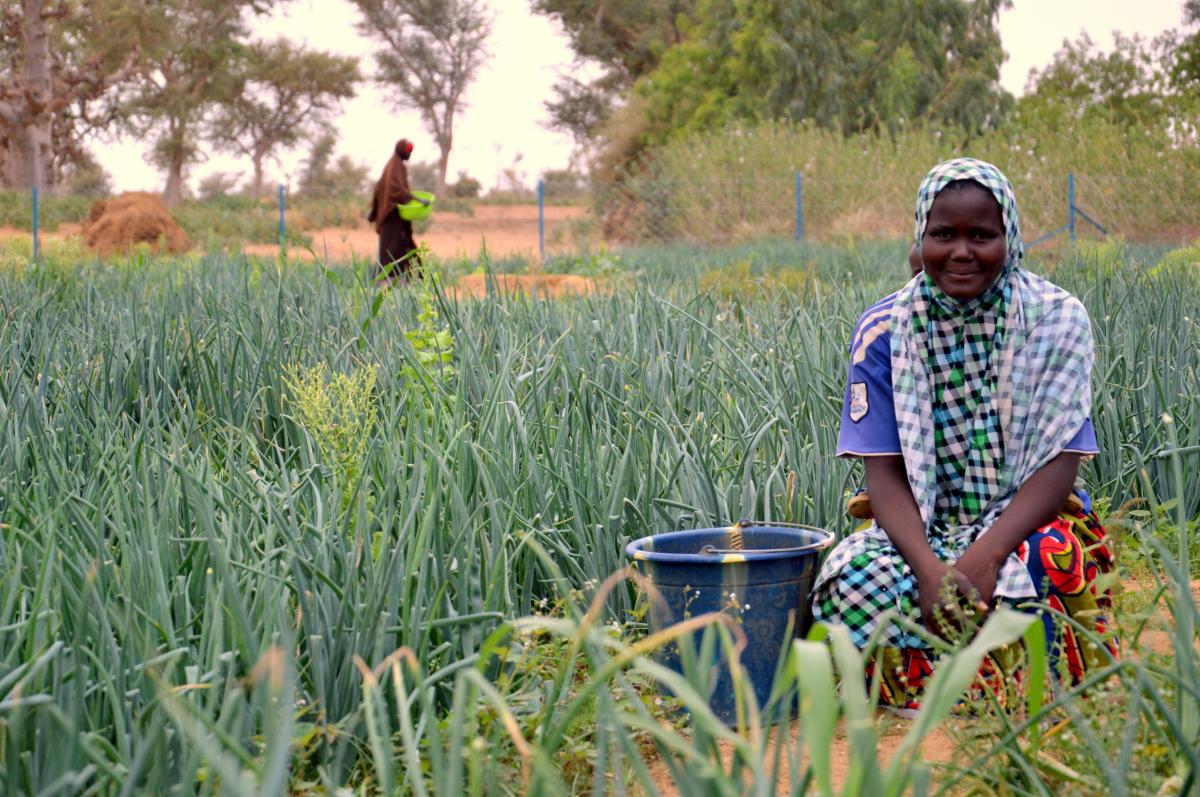
La sécurité alimentaire ne peut se penser sans les femmes rurales
Stephanie EECKMAN | 25/03/2016
Pays du Sahel, le Niger est caractérisé par une situation structurellement déficitaire en termes de production de nourriture, renforçant ainsi le risque de crise alimentaire, qui, elle-même, résulte de plusieurs facteurs souvent cumulatifs, tels que les aléas climatiques; la dégradation des sols et le manque de diversification des productions. Dans le contexte sahélien, la vulnérabilité à l’insécurité alimentaire et les crises alimentaires ont aussi une dimension genre importante, car les femmes sont parmi les plus vulnérables en raison de leurs faibles pouvoirs sociaux et économiques. Leur accès limité aux moyens de production tels que la terre, le crédit et les technologies, et leur faible participation à la prise de décision, réduisant leur capacité de résilience aux chocs. Depuis 2012, à travers le programme d’appui à la mise en place des entités décentralisées de la région de Dosso (PAMED2) , les communes investissent dans l’aménagement des terres agricoles au profit des couches vulnérables afin d’améliorer leur sécurité alimentaire à travers le développement des cultures maraîchères. Dans la pratique, le maraîchage est surtout effectué par les femmes, mais celles-ci sont souvent limitées dans leur activité par le manque d’accès au foncier. Mieux comprendre la dimension genre afin de construire une résilience adaptée « Dès que le mil récolté est consommé, nous, les femmes, commençons à nous débrouiller pour donner à manger aux enfants. » -Haoua Mamane, cultivatrice d’oignons sue le site de Sokorbé, commune de Loga C’est bien pour cela qu’un des objectifs visés est de mettre les femmes à l’abri de l’insécurité foncière et alimentaire par le transfert des droits de propriété de ces terres agricoles sur les sites maraîchers. Le programme a mis en œuvre une stratégie de renforcement des capacités des acteurs du foncier rural et des communautés locales pour que l’accès durable des femmes aux terres des sites aménagés soit une réalité. Bien que le programme PAMED2 a soulevé le problème de la propriété des terres, l’expérience démontre que les sites sur lesquels les aménagements ont été réalisés, appartiennent à des propriétaires fonciers qui prêtent ces sites aux groupements pendant la saison sèche et le récupère pendant la saison des pluies. Et ainsi, les femmes des groupements ne peuvent pas profiter entièrement de la contre-saison, elles ratent également l'opportunité de cultiver les plantes pérennes comme le moringa, l’aubergine, le poivron, le piment, sur toute l’année. Pour remédier à cela, des réflexions sont engagées avec les leaders d’opinions, les maires et les propriétaires fonciers pour que les femmes disposent des terres agricoles pour une exploitation continue en toute saison. De plus, des actions de sensibilisation sont menées pour convaincre les propriétaires fonciers de pratiquer eux-mêmes l’exploitation en toute saison. Cela vise donc à ce que ces propriétaires soient eux-mêmes installés sur une partie du site aménagé et qu’ils bénéficient du même encadrement fourni aux femmes par le programme. En plus de cette option, d’autres propositions ont été faites aux propriétaires fonciers, telles qu’un versement de la dîme à la fin de chaque campagne par les femmes. Le succès des négociations ont abouti à des contrats de prêt pour une exploitation continue en toute saison des terres par les femmes dans la commune rurale de Douméga sur les sites des villages de Tounga Hassada et de Tounga Malamey.
-

Voyage d'étude au Burkina Faso
Marcella PASOTTI | 23/03/2016
Du 21 au 27 février 2016, une délégation de partenaires du projet BARVAFOR s’est rendue au Burkina Faso pour un voyage d’étude. Cette visite avait pour objectif d’offrir la possibilité aux participants de découvrir les systèmes de valorisation au tour des digues de retenue burkinabés ainsi que leurs techniques d’entretien et de maintenance. Les participants ont visité les barrages des sites de Koubri, Savili, Manga, Korsimoro et Gaskey. Ils ont pu apprécier les aménagements hydro-agricoles autour de ces barrages, visiter les périmètres maraichers et les casiers rizicoles, et découvrir des systèmes nouveaux d’irrigation. Les moments les plus enrichissants ont été les échanges entre nos agriculteurs sénégalais et les producteurs burkinabés. À l’ombre de grands arbres et à l’aide des traducteurs, ils se sont posés des questions l’un l’autre sur les respectives pratiques agricoles. Pour plus de photos, visitez notre page Flickr!
-
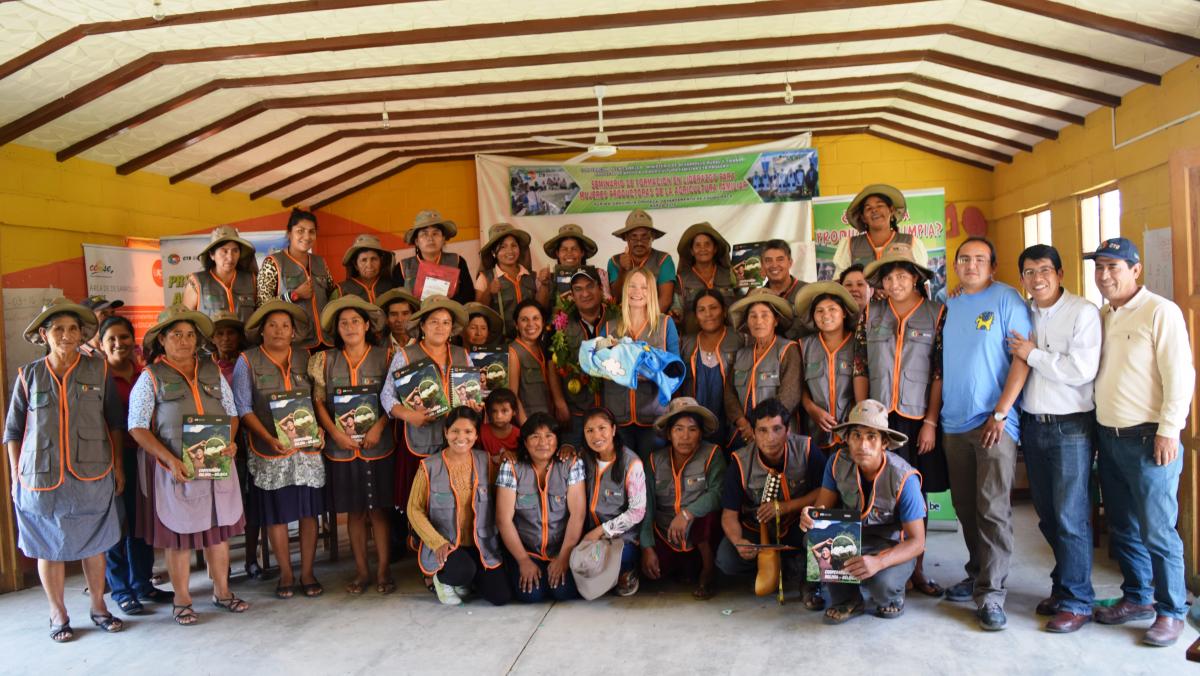
Fortaleciendo liderazgos en productoras y productores de la agricultura familiar
Agar TAMAYO | 21/03/2016
En fecha 08 de marzo de 2016 se conmemoró el Día Internacional de la Mujer y se llevó a cabo el “Taller de Fortalecimiento al Liderazgo”, con duración de 4 días intensos de formación continua dirigido a lideresas y líderes de hoy en la localidad de Surima, Chuquisaca. El impacto del taller se traduce en el fortalecimiento de las capacidades de acción social y productiva con miras a participar activamente en la mejora de la seguridad alimentaria y nutricional de las familias campesinas en los Municipios de Poroma, Yotala y Sucre rural, distritos 6, 7 y 8 de la Provincia de Oropeza, beneficiando alrededor de 1400 familias. Los protagonistas de este taller fueron 25 mujeres productoras y 5 hombres productores identificados como líderes en sus comunidades, quienes ahora tienen la misión y el compromiso de replicar los contenidos y generar a la vez la creación de nuevos líderes en la agricultura familiar. Este taller forma parte de las actividades que desarrolla el Proyecto de Apoyo a la Agricultura Familiar (PROAGRIF), como resultado de un Convenio Específico de cooperación firmado en 2014 entre el Estado Plurinacional de Bolivia y el Reino de Bélgica. En la clausura del evento se destacaron dos motivos especiales: la primera fue el reconocimiento a la Sra. Salustia Sea, protagonista de la foto ganadora que representó a Bolivia en el concurso organizado por la CTB en Bélgica; y la segunda fue el nacimiento inesperado de un bebe de una de las participantes al segundo día de iniciado el taller, quien después de dar a luz en la posta de salud cercana se reincorporo al taller demostrando compromiso, fuerza y deseo de superación. Sucre, Marzo 2016
-

Maisha Bora Local Partners: Childreach Tanzania
Toon DRIESEN | 18/03/2016
Childreach Tanzania is a locally registered charity based in Moshi, Kilimanjaro Region. We operate at grassroots level, working in partnership with government and local communities to implement sustainable, community-led initiatives. Our work is built around long term goals to ensure children realize their rights in education, health and child protection. Education is one of the best tools that can take a nation from poverty to prosperity. Childreach Tanzania focuses on primary education development by improving learning environment, implementing right-based projects, school farming and advocating for the initiation and improvement of school feeding programmes which aim to achieve increased school academic performance, increased enrolment and attendance rates, improvement in pupils’ health status and decreased drop-outs. In the community, we focus on using “agents of change” who will steer positive behavior change in areas of education, health and child protection. Our Vision is a world where all children have the opportunity to unlock their full potential in life. Our Mission is to improve children’s access to healthcare, education and child protection, to restore children’s rights, to empower children to create positive change, to establish a global movement of child rights supporters and to use our global voice to influence others to act. In partnership with their international partner WFP, Childreach Tanzania will be implementing the nutrition component (result field 3) of the Maisha Bora programme. Childreach Tanzania will carry out a variety of activities, including sensitization campaigns on nutrition, hygiene and the prevention and treatment of diarrhea and HIV; nutrition education projects at schools; introducing vegetable gardens and construction of water harvesting tanks at local schools; and capacity building of the districts on managing nutrition interventions and preparation of plans and budgets for nutrition.For more information visit www.childreachtz.org and www.childreach.org.uk
-
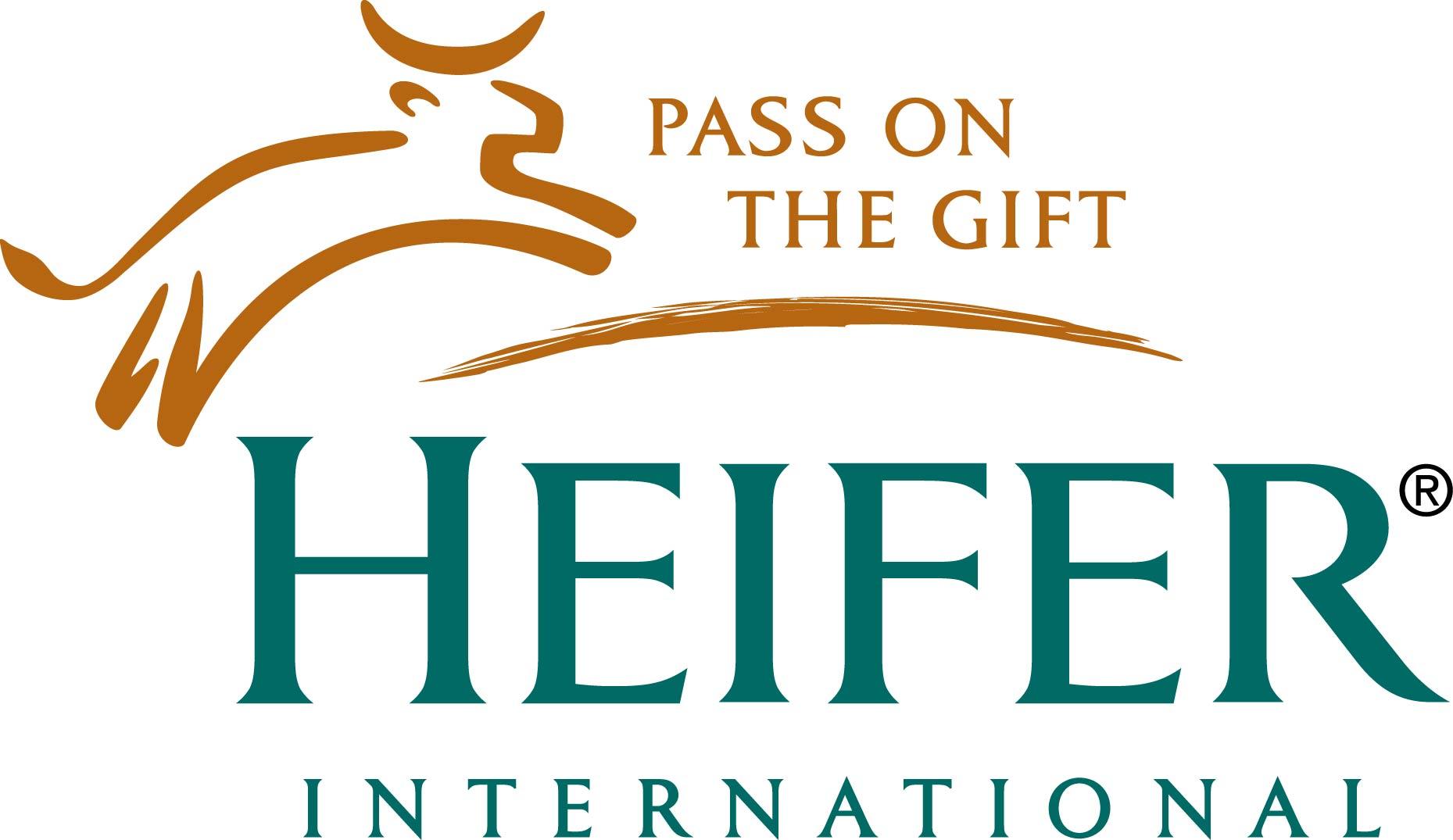
Maisha Bora Local Partners: HEIFER International Tanzania
Toon DRIESEN | 17/03/2016
Heifer International Tanzania (HITZ) is a registered NGO in Tanzania affiliated with Heifer Project International in the United States of America (USA). Heifer International's mission is to work with communities to end world hunger and poverty and to care for the earth. HITZ implements programs and projects using a sustainable livelihoods approach in supporting diverse, socially acceptable and economically viable, integrated, livestock farming enterprises portfolios that enable resource-poor farm families to build resilience and sustainable livelihoods to overcome abject poverty. Passing on the gift is fundamental to Heifer International’s approach to sustainable development. As people share the offspring of their animals and other resources with successive households, they replicate their own knowledge, resources and skills by creating and replicating a continuously expanding network of hope, dignity, and self-reliance around the world. HITz started working in Tanzania in 1974 and was officially registered as an INGO in 1981. HITz has been working in all 30 regions of Tanzania. Currently there are 7 on-going projects. Heifer International Tanzania works together with VSF-Belgium on the livestock component of the Maisha Bora programme and is responsible for the execution of Result field 2: “Improve productivity and quality of animals”. For more information see: http://www.heifer.org/
-

Maisha Bora Local Partners: Ujamaa Community Resource Team (UCRT)
Toon DRIESEN | 17/03/2016
Ujamaa Community Resource Team (UCRT) is a non-profit environmental and social justice organization, whose mandate is to work with indigenous groups of different cultures). Its mandated target communities are those who depend on communal resource management regimes to support their livelihoods. The main objective is improved livelihood for pastoralist and hunter-gatherer communities through enhanced capacity of communities to sustainably manage their natural resources. UCRT has more than 20 years’ experience in village land use planning and land governance.UCRT works with the full involvement of local communities to develop strategies for long-term sustainable management and wise use of land and natural resources. We believe that all members of a community deserve an equal right to participate and make decisions regarding community affairs and that decisions should not be undermined by elite or vested interests. To achieve this vision, UCRT has developed strong and close relationships with the communities. UCRT has supported and empowered the local communities it works with to:Secure certificates (rights) to their village landsDevelop and implement better local resource management plans, based on customary practicesAchieve the resolution of long-standing local conflicts over land and natural resources Partner with the private sector to generate revenues that have helped transform their access to education and health servicesReinvigorate and enable customary leadership institutions to address key societal issues (such as women’s rights) and build inter-community cohesion and cooperation Promote community land and natural resource interests in Tanzania’s constitutional reform process.UCRT works together with VSF-B on the livestock component of the Maisha Bora programme and is responsible for the execution of result field 1: “Access & sustainable use of livestock resources”. For more information see: www.ujamaa-crt.org

